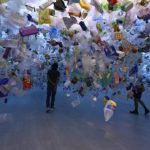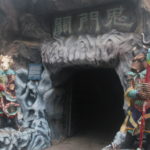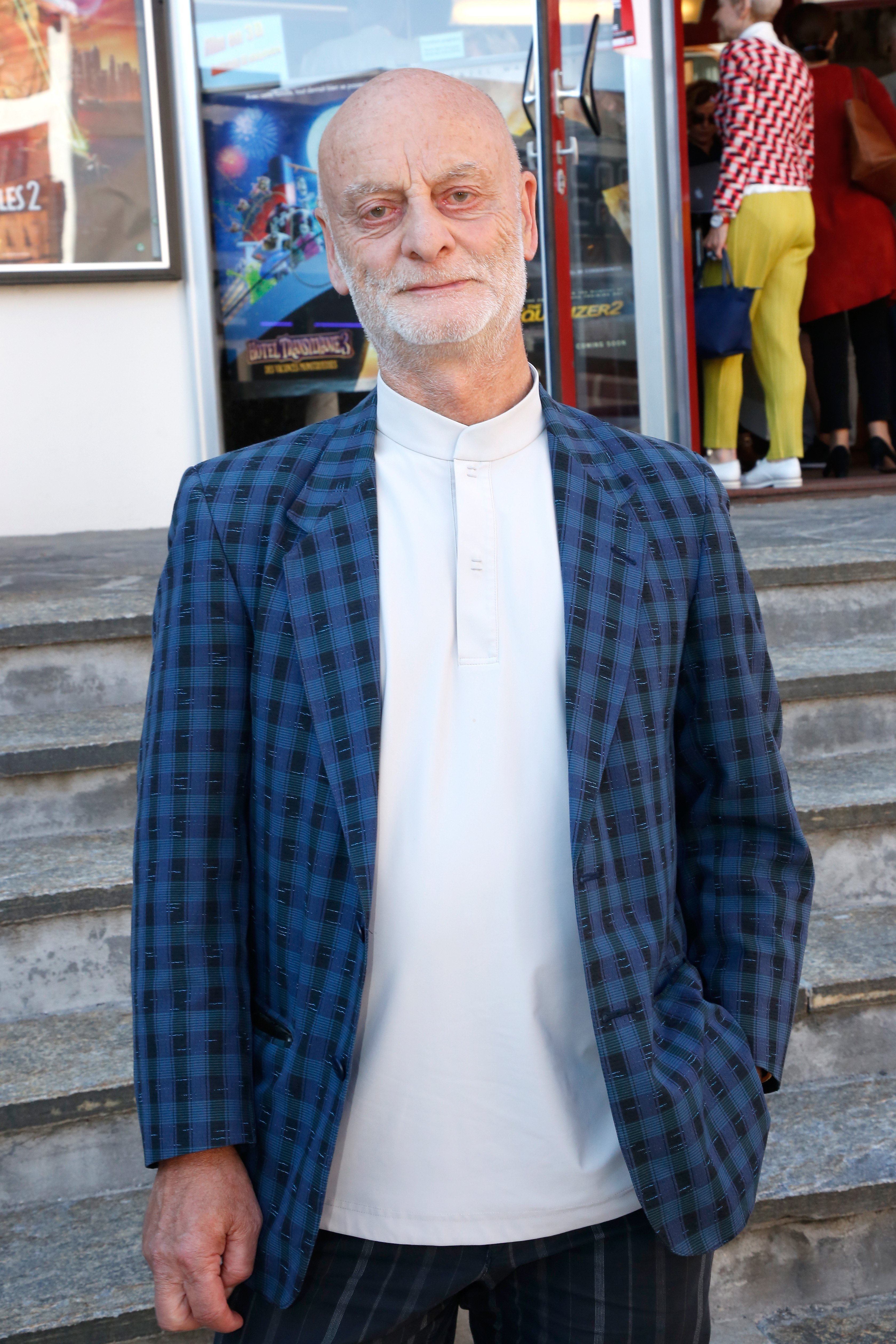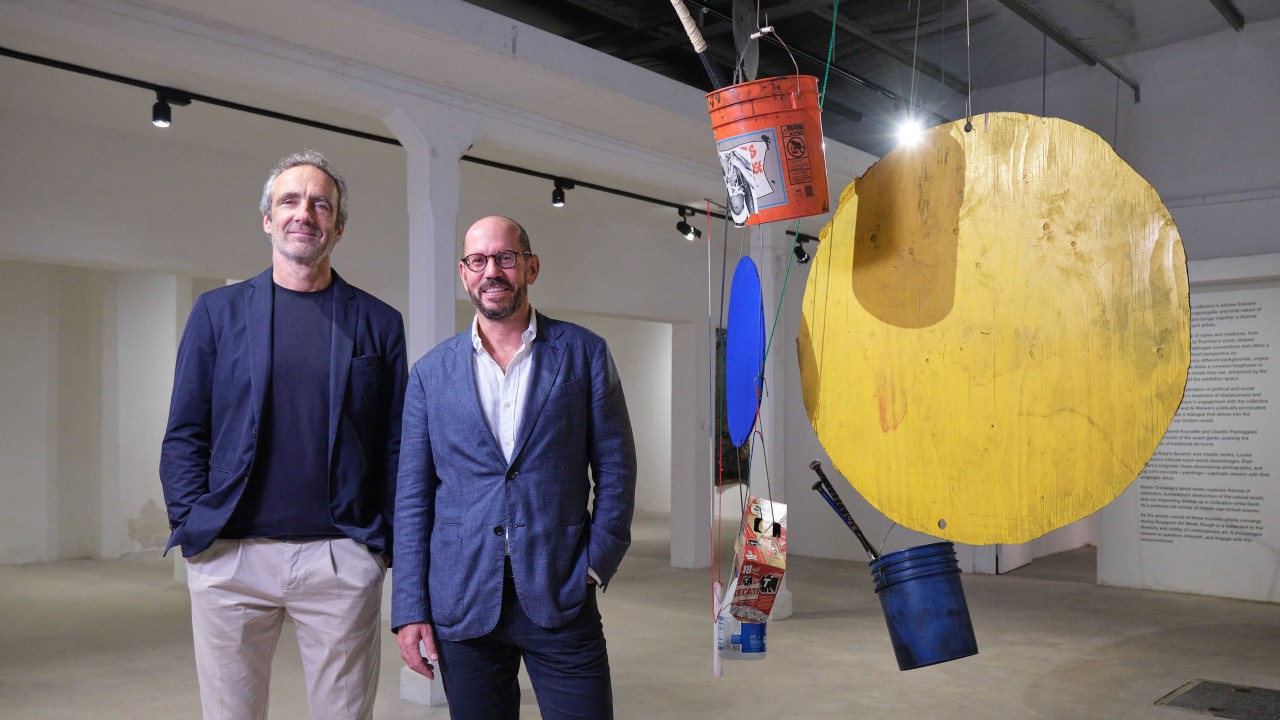Weather Forecast
2016 - Film & Video (Film & Video)
12:48 minutes
Guan Xiao
Mixed clips from her collection of thousands of images found online, the three-channel video Weather Forecast is an inquiry into the necessity of a physical movement (a travel) for our identity to transform or change. The question “Why can’t we view Europe from a chair?” periodically punctuates the video, suggesting that a similar personal transformation could occur by experiencing a place through the Internet and staying in the same place. Few episodes appear, each being a transformation process in itself, either by correlation, juxtaposition, combinations of specific matters such as iconography, texts, landscapes, events. Drawing a parallel between how identity transforms and how weather evolves over time, the video possibly hints to an escape from current political and geopolitical issues, and expressly on in the context of the refugee crisis and terrorism in Europe.
Guan Xiao is known for her videos composed primarily of found images and videos and her sculptures that explore the logic by which things relate to one another. Her practice addresses ideas of permanence, transformations, and perception Since the beginning of her practice, she began collecting material from various sources including YouTube, DVDs, home video libraries and other footage archives in addition to producing her own original content. Her sculptures often reference forms of the old—mimicking relic-like characteristics and totemic shapes—juxtaposed within a contemporary configuration. For example, The Documentary: Geocentric Puncture (2012) positioned fake artifacts against professional photography studio sets. In a similar way with her videos, Guan initiates a rereading of existing material by presenting a new visual language that is stripped of context and resists pre-conceived associations. Conceding equal importance to objects, people and phenomena, Guan Xiao’s videos often explore how our experience of browsing the Internet shapes our vision of the world and our own – always in transformation – identities.
Colors:
Related works sharing similar palette

© » KADIST
Martin Creed
2003This photograph of Martin Creed himself was used as the invitation card for a fundraising auction of works on paper at Christie’s South Kensington in support of Camden Arts Centre’s first year in a refurbished building in 2005...
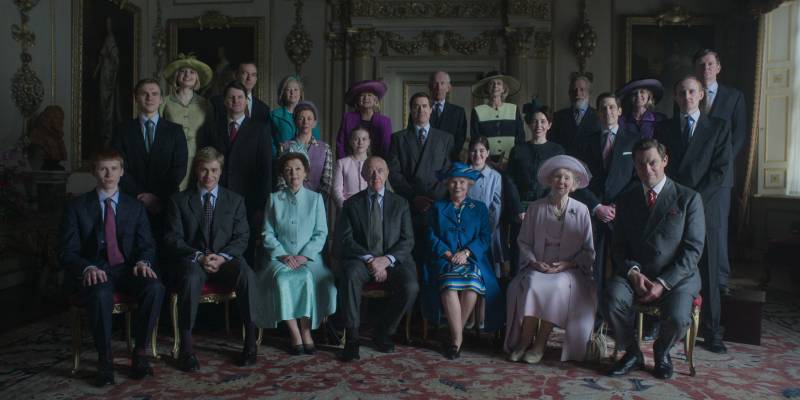
© » KQED
‘The Crown’ Ends as Pensive Meditation on the Most Private Public Family on Earth | KQED Skip to Nav Skip to Main Skip to Footer The Do List ‘The Crown’ Ends as Pensive Meditation on the Most Private Public Family on Earth Listen Eric Deggans Dec 14 Save Article Save Article Failed to save article Please try again Facebook Share-FB Twitter Share-Twitter Email Share-Email Copy Link Copy Link A ‘Crown’ recreation of a royal family portrait photo...
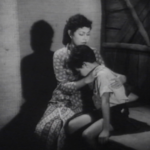
© » ARTS EQUATOR
Celebrating the monstrous other: "Anak Pontianak" and "Nobody" at LumiNation | ArtsEquator Thinking and Talking about Arts and Culture in Southeast Asia Articles Courtesy of The Filmic Eye August 5, 2019 By ila (1,100 words, 6-minute read) The year is 2049: two hundred years since the Pontianak first appeared in writing, marked insignificantly in Hikayat Abdullah as residues of superstitious and foolish beliefs of the Chinese and Malays that have persisted with time...

© » KADIST
Adelita Husni-Bey
2015After the Finish Line is a recent film by Adelita Husni-Bey produced for the exhibition Movement Break at Kadist-SF in 2015...

© » KADIST
Saturday, December 4 at 3 pm at Kadist Visit of the exhibition in the presence of the artists : Kate Mitchell, Ms&Mr and Arin Rungjang Please RSVP: assistant@kadist.org Wednesday, December 8 from 7 to 9pm in the Auditorium of Jeu de Paume “Fabrications: The Theatre of Everyday Life” presented by David Teh and Dougal Phillips “Unreal Asia” a thematic programme originally conceived for the 55th International Short Film Festival Oberhausen 2009...

© » KADIST
Hamra Abbas
2010At first glance, Cityscapes (2010) seems to be a collection of panoramic photographs of the city of Istanbul—the kind that are found on postcards in souvenir shops...

© » KADIST
Sabelo Mlangeni
2019The Royal House of Allure is a name of a safe house on mainland Lagos where members of the queer community in need of boarding, due to various circumstances, live together...

© » HYPERALLERGIC
Archaeologists Find Evidence of Hallucinogenic Drug in Ancient Rome Skip to content A bust of Emperor Trajan surrounded by black henbane seends and flowers and a femur discovered by archaeologists (edit Valentina Di Liscia/ Hyperallergic ) Two new archaeological finds suggest Roman subjects at the northern edge of the ancient empire used a hallucinogenic and poisonous plant called black henbane, the effects of which were described by Greek philosopher Plutarch as “not so properly called drunkenness” but rather “alienation of mind or madness.” Dutch zooarchaeologists Maaike Groot and Martijn van Haasteren and archaeobotanist Laura I...

© » KADIST
Pascual Sisto
2013All Watched Over by Machines of Loving Grace takes its title from a 1967 poem by American writer Richard Brautigan, which describes a utopian future where computers are in harmony with and protective of mankind and nature, performing all the necessary work while we retreat back towards nature...



